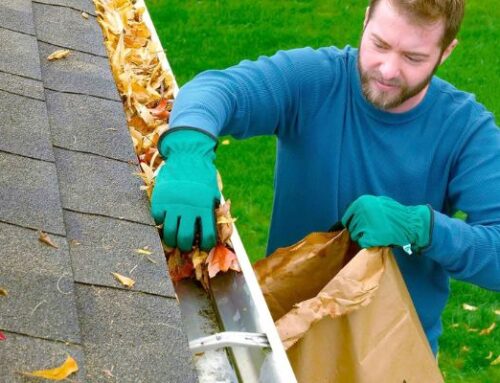Your home is your sanctuary, shielding you from the elements and providing comfort and security for you and your loved ones. Yet, lurking above, often unnoticed and underappreciated, are your gutters – the unsung heroes of your home’s defense against water damage. Neglected gutters can wreak havoc on your property, leading to leaks, mold growth, and even structural deterioration. However, with a proactive approach to gutter maintenance and repair, you can fortify your home against these threats and ensure its long-term resilience.
In this comprehensive guide, we’ll delve into expert strategies for identifying and addressing common gutter repair issues, empowering you to take control of your home’s water management system. From regular gutter inspections to proactive upgrades, we’ll cover everything you need to know to keep your gutters in optimal condition year-round. So, grab your tools and join us on a journey to mastering gutter maintenance – because a water-resilient home begins with a well-maintained gutter system.
1. Regular Inspection:
Regular gutter inspections are essential for catching gutter problems early on before they escalate. Aim to inspect your gutters at least twice a year, preferably in the spring and fall. Start by visually examining the entire length of your gutters from the ground. Look for any signs of damage, such as cracks, rust spots, or areas where the gutter is pulling away from the house. Pay close attention to corners, seams, and downspout connections, as these are common trouble spots.
After the visual inspection, consider using a ladder to get a closer look. Check for sagging sections, loose fasteners, and any obstructions that may be impeding water flow. If you’re uncomfortable using a ladder or if your gutters are difficult to access, consider hiring a professional gutter contractor to perform the inspection for you.
2. Clear Debris:
One of the most common gutter issues is clogging caused by leaves, twigs, pine needles, and other debris. Over time, this debris can accumulate and form blockages, preventing water from flowing freely through the gutters and downspouts. To prevent clogs, it’s essential to regularly remove debris from your gutters and downspouts.
Start by using a gutter scoop or garden trowel to manually remove debris from the gutters. Work your way along the entire length of the gutter system, scooping out any leaves or debris you encounter. Once you’ve cleared the gutters, flush them with water using a garden hose to remove any remaining residue and ensure proper water flow.
For stubborn clogs, you may need to use a plumber’s snake or pressure washer to dislodge the debris. Alternatively, consider installing gutter guards or screens to prevent debris from entering the gutters in the first place.
3. Check for Leaks:
Leaks are another common gutter problem that can lead to water damage if left unaddressed. To check for leaks, wait for a rainy day and inspect your gutters while water is flowing through them. Look for any signs of water dripping or seeping out from seams, corners, or joints.
If you spot a leak, mark its location for repair once the weather clears up. Depending on the severity of the leak, you may be able to patch it yourself using gutter sealant or silicone caulk. Simply clean the area around the leak, apply the sealant or caulk, and smooth it out with a putty knife. For larger leaks or more extensive damage, you may need to replace the affected section of gutter altogether.
4. Repair Damaged Sections:
In addition to leaks, gutters can suffer from other forms of damage, such as cracks, holes, or rust spots. These issues can compromise the effectiveness of your gutter system and lead to further damage if left unaddressed. Fortunately, many minor gutter repairs can be done DIY-style with the right tools and materials.
For small cracks or holes, start by cleaning the area around the damage with a wire brush or sandpaper. Once the surface is clean and dry, apply a generous amount of gutter sealant or silicone caulk to the affected area. Smooth the sealant with a putty knife and allow it to dry completely before testing for leaks.
If you encounter larger holes or sections of rusted-out gutter, you may need to patch them with a piece of sheet metal or aluminum flashing. Cut the patch to size, ensuring it overlaps the damaged area by at least a few inches on all sides. Secure the patch in place using roofing screws or rivets, then seal the edges with gutter sealant to prevent water infiltration.
5. Address Sagging Gutters:
Sagging gutters not only affect the appearance of your home but also indicate structural issues that can lead to water damage. When gutters sag, they are unable to effectively direct water away from your home, resulting in pooling and overflow. To address sagging gutters, start by inspecting the hangers and fasteners that secure the gutter system to your home. Tighten any loose screws or replace damaged hangers to provide additional support. In some cases, you may need to realign or adjust the pitch of the gutters to ensure proper water flow toward the downspouts.
6. Prevent Ice Dams:
In colder climates, ice dams can pose a significant threat to gutters and roofs. Ice dams form when melted snow refreezes along the eaves of a roof, creating a barrier that prevents proper drainage. This trapped water can seep under shingles, causing leaks and water damage to your home’s interior. To prevent ice dams, ensure proper attic insulation and ventilation to maintain consistent temperatures on the roof surface. Additionally, install gutter heating cables or roof ice melt systems to prevent ice buildup along the eaves.
7. Consider Gutter Upgrades:
If your gutter system is outdated or consistently experiencing issues, it may be time to consider upgrades or replacements. Modern gutter materials, such as aluminum, vinyl, or steel, offer improved durability and resistance to rust and corrosion compared to traditional options like galvanized steel or wood. Additionally, seamless gutters, which are custom-cut to fit your home’s dimensions without seams or joints, can minimize the risk of leaks and clogs. Consult with a professional gutter contractor to assess your current system and recommend suitable upgrades based on your home’s specific needs and budget.
8. Maintain Proper Drainage:
In addition to addressing gutter issues, it’s crucial to ensure proper drainage around your home’s foundation. Downspouts should extend at least 5-10 feet away from the foundation to direct water away from the house and prevent soil erosion. Consider installing splash blocks or underground drainage systems to further channel water away from vulnerable areas. Regularly inspect and clear any obstructions in the drainage paths to maintain optimal water flow and prevent water from pooling around the foundation.
Conclusion:
Regular gutter inspection and maintenance are essential for keeping your gutters in good working condition and protecting your home from water damage. By following these expert tips for identifying and addressing gutter repair issues, you can ensure that your gutter system remains effective and reliable for years to come. Remember, when in doubt, don’t hesitate to seek professional help to tackle more complex gutter repairs and ensure the safety and integrity of your home.





